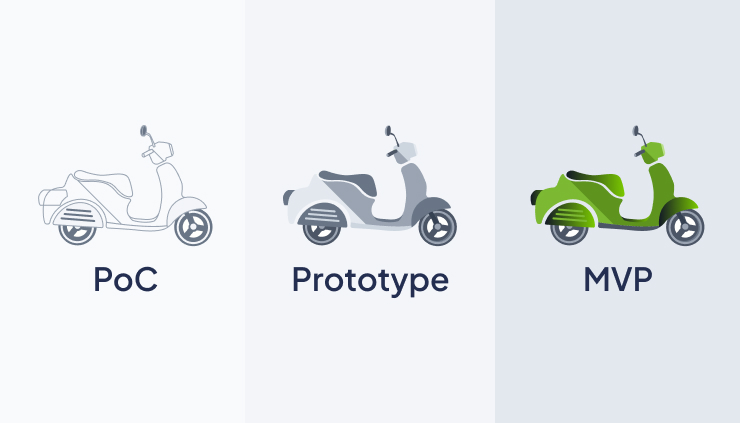Cloud Migration: Types, Steps, and Best Practices
The shift from on-premise service storage systems to cloud technologies is digitalization, one of the most powerful trends in the IT field. To successfully scale to meet the goals of digital transformation, it is important to choose a robust cloud strategy for a smooth and seamless transition. Its choice depends, first of all, on business vision, goals, and interests of the company, thus, it doesn’t go about identity of the migration process for two enterprises with similar activities. Cloud migration strategies suggest creating a plan, according to which an organization moves its data and software from its on-premises architecture to the cloud. Due to the fact, that not all workflows and tasks will be performed better after migrating to the cloud, it's important to prioritize and identify how you'll be migrating applications during the planning phase. What types of transfer strategies exist and what algorithm for their implementation is, will be described below.
Cloud migration process
The migration plan depends on how complex your work environment is and how large it is. The main stages of the transfer are as follows:
- Planning. Before you start transferring information, it is important to decide on the motive of the process - what are you doing this for? Based on this, the optimal strategy is selected to ensure your tasks. To achieve this, it is important to analyze the current environment: calculate the requirements for a cloud server by evaluating the requirements for software resources so that you do not spend money on much more productive and powerful technologies than the systems you use require. This is best done by enlisting the experience and expertise of an IT specialist. The performance management solution (ARM) gives you an objective view of your environment in real-time.
- Choice of the cloud environment. When the client understands exactly how to migrate data to cloud services as efficiently as possible, it is easier to choose one from the cloud technology models: public cloud, hybrid cloud, private cloud, or multi-cloud. The choice of one of these solutions should be based on understanding your needs - current and future, as well as on compatibility with software vendors.
- Application and data migration. As long as your plan is detailed and tailored to your work environment, the migration process will not take long or be difficult. The issue of cloud security requires special attention: compliance with the security policy, ensuring the possibility of backup and recovery of data is required. AWP for base performance is performed in preparation for the next migration stage.
- Testing the success of data transfer to cloud services. You can verify the effectiveness of the process done only by checking the operation and performance of the system after the transition. To do this, applications are used to compare software performance before and after migration. The commercial and technical aspects of the performance of the environment being tested are evaluated.

What should you know before migrating to the cloud?
- There are different types of cloud services such as public clouds, private clouds, and hybrid clouds. Explore their features and choose the most suitable type for your data and requirements.
- Pay special attention to the security measures of the cloud provider. Review the security policy, data encryption mechanisms, backup availability, and tamper protection.
- Examine the performance and reliability of the cloud provider. Learn about Service Availability Assurances (SLA), Scalability, Data Rates and Service Levels (SLA).
- Familiarize yourself with legal and regulatory requirements regarding the storage and processing of data in cloud services. Make sure the cloud provider meets the required standards and has the appropriate certifications.
- Determine how your data will be managed in the cloud. Find out what tools are provided for backing up, archiving, monitoring and restoring data.
- Develop a data migration plan that includes data preparation, transfer, and data validation. Consider the time required for migration, potential risks, and possible system interruptions.
- Estimate the cost of cloud services and factor it into your data migration decision. Explore cloud provider pricing models and determine the most beneficial and cost-effective solution.
- Learn about available training materials and cloud provider support. Check for documentation, community forums, and availability.
Considering the features of the migration process described above, with the support of experienced developers, you will be able to perform the migration process that is relevant to your requirements and with the highest performance for the system.
Read also: Cloud Computing in Healthcare: Benefits, Use Cases and Challenges
What are the types of cloud migration strategies? Best practices for 2023

Cloud migration strategies are plans developed by companies to migrate all infrastructure resources - information, services and software - to the cloud. Cloud integration rates have skyrocketed since the 2000s with the introduction of the cloud concept from Salesforce and Amazon. With the onset of the pandemic in 2020, this trend has further intensified, due to the mainstreaming of remote work for employees and the same high demand for innovative technologies.
Speaking of cloud migration, they mean the process of transferring all digital resources to cloud storage from a local architecture or another cloud. And creating a solid migration strategy is already a pre-migration step. Studies show that most companies use at least one cloud component, with just under a third of their total spending going towards cloud services.
Read also: Cloud Service Models SaaS, PaaS, IaaS: How They Differ
What types of cloud migration strategies are known today?
Rehosting, or the "lift and move" strategy.
Within the process, a literal copy of the system architecture that has been already in use by the company is transferred. This technique is relevant for small companies that perform simple workflows and only build prospects for scaling activities. It is also the best option for institutions that are characterized by infrastructure dependence on virtual machines. What is the nuance of re-hosting? It does not provide an opportunity to experience the advantages of migrating to cloud technologies, in particular, flexibility. This type of migration strategy takes the least amount of time to implement, however, with a long-term approach, it sometimes results in high financial costs.
Replatforming, or the "move and improve" strategy.
To make the transition, you need to implement small changes, including simplifying scalability. The infrastructure is mostly preserved. This technique is suitable for companies with planned technology scaling. If you would like to analyze performance in the cloud, you should choose re-platforming. However, like in the case of rehosting, it will not allow to enjoy all the advantages of the transfer.
Ransom.
If the components of the architecture are outdated, and in connection with this, the cost of their maintenance has increased, and scaling the system is not realistic, it makes sense to transfer this component (for example, a CRM customer relationship management system) to a cloud solution. This approach is illustrated by the Cloud CRM Salesforce solution. This technique will be convenient if the system is critically outdated and it is very difficult to manage it. The difficulty in working with this approach is that employees or end users will need more time and effort to learn how to work with the new system.
Refactoring.
The refactoring strategy involves a complete restructuring of the existing infrastructure from scratch. This technique is recommended for companies that want to get the most out of the possibilities of cloud solutions - serverless computing, and automatic scaling. The technique is best chosen when developers and customers agree on the need to rebuild existing code and frameworks. And since rewriting the entire system cleanly is a challenge that requires financial investments and time spending, it is predictably considered the most expensive. At the same time, there is also a long-term benefit due to implementing a refactoring strategy.
Retirement.
If there are legacy components or solutions in the architecture that will not play a special role when migrating to the cloud, they are simply decommissioned and not moved to the cloud. This decision is dictated not only by common sense but also by security requirements: outdated modules create security risks and can become gateways for data leakage.
Preservation.
If one or more components of the current infrastructure cannot be deployed in the cloud (for example, inappropriate data cannot be moved to cloud storage), they are stored locally. And the infrastructure itself is in a hybrid cloud environment.
The cloud migration strategies described above are used by companies to complete the migration. In its pure form, approaches are not implemented so often: development companies offer hybrid, combined migration strategies that take into account the state of the system now, scaling prospects, etc.
Stages of cloud migration
Services from the Software Development Hub also include the direction related to the transfer of data to the cloud system. To do this, the migration process is divided into the following steps:
- Set a business goal for the migration.
- Determine expenses you will need to allocate to the migration in accordance with your needs.
- Analysis of the working environment and software.
- Choice of the cloud environment.
- Selection of a deployment model (IaaS, PaaS, SaaS).
- Choosing a reliable cloud partner.
- Building the right architecture.
- Determining the priorities of the migration components - what and in what order will be transferred.
- Fixing baseline performance indicators.
- Formation of a data migration plan.
- Actually transferring applications.
- Overview of software, databases, and required components.
- Domain and IP transfer to the application.
- Testing of programs, databases, and components.
- Performing security testing - to identify risks and protection against them.

The Software Development Hub will help customers securely migrate systems to the cloud. Based on your business goals and scalability perspectives, we will form the optimal migration strategy and ensure the implementation of the process according to the approved plan. In addition, we provide software development services for startups: specialists will help create a commercially viable, technically functional product that will take a strong place in the market.
Our portfolio includes medical information systems, e-Prescription systems, applications for tracking medicines with a QR scanner, medical ERP systems, etc.
Categories
Share
Need a project estimate?
Drop us a line, and we provide you with a qualified consultation.









